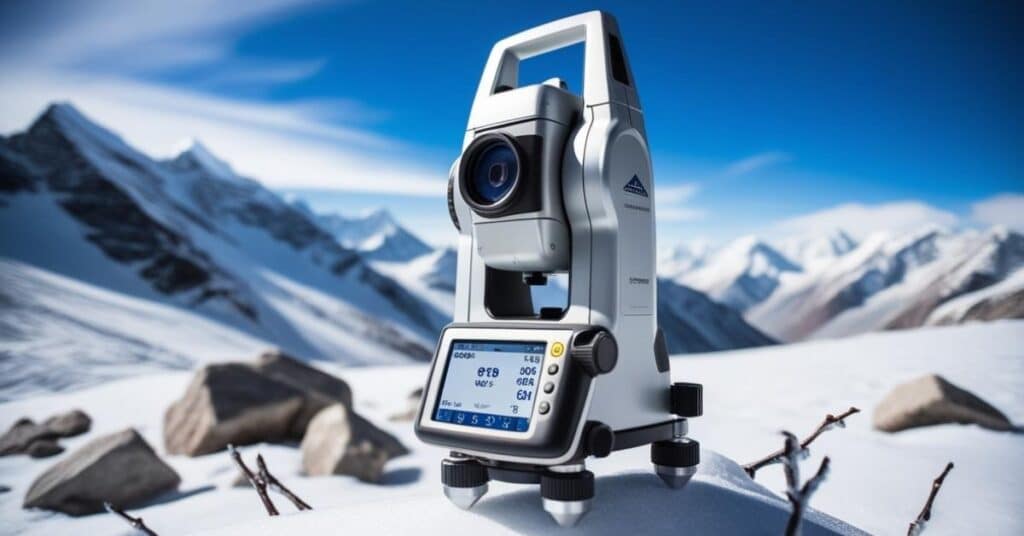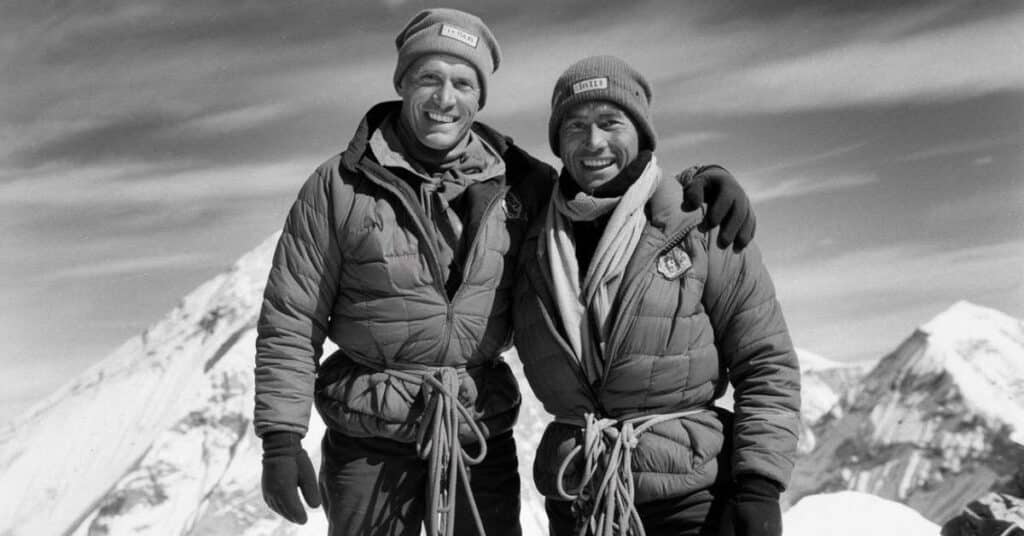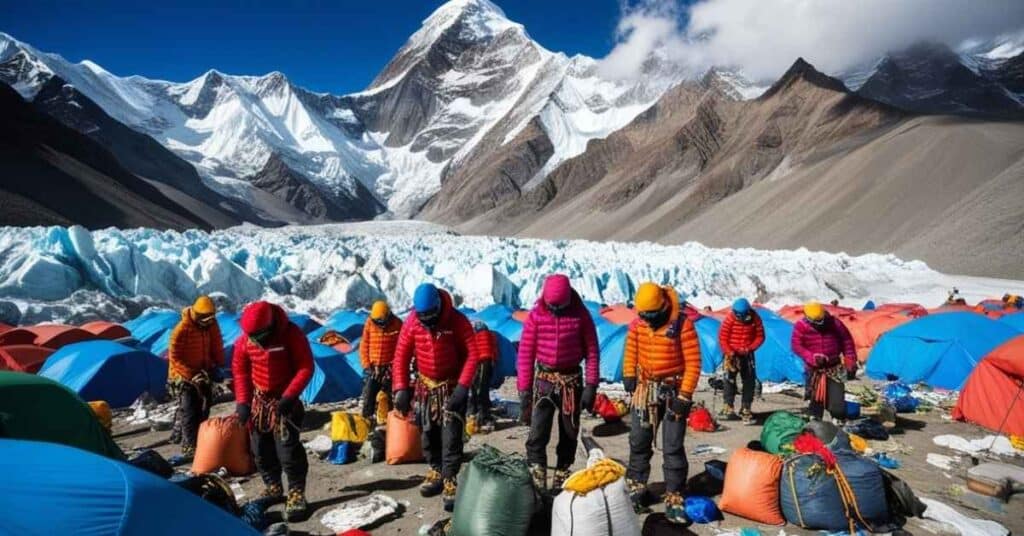Mount Everest, standing at 8,848.86 meters (or 29,031.7 feet), is more than just the tallest mountain on Earth it is a symbol of human ambition and nature’s awe inspiring power. But how exactly do we measure such an imposing height, and why does Everest’s altitude capture our imagination?
In this guide, we will explore Everest’s science, history, cultural significance, how we determine its height, and why it changes. Whether you are an adventurer, a nature enthusiast, or just curious about the mysteries of the world, this article delves into the fascinating world of Everest’s height and its significance.
What Defines “Altitude”?
Before diving into the specifics of Everest’s height, it is essential to understand what altitude actually means. Simply put, altitude refers to the height of an object or location above a reference point, often sea level. In the case of Mount Everest, altitude refers to how high the summit is above mean sea level (MSL), which is the average height of the ocean’s surface, used as a reference point.
Types of Altitude Measurements
There are different ways to measure altitude, especially in mountainous regions like Everest:
- Elevation above sea level: This is the most common measurement for mountains and is considered the official standard for Mount Everest.
- Vertical height from the base: This measurement takes into account the starting point of the mountain, typically from its base at the edge of the ocean. For Everest, this height can vary significantly based on what base is chosen (e.g., sea level vs. base camp).
Famous Mount Everest Climbers
Mount Everest has seen remarkable feats of mountaineering, from the first ascent in 1953 to modern records. Below is a table of notable climbers who have made their mark.
| Name | Country | Year of Ascent | Key Achievement |
| Edmund Hillary | New Zealand | 1953 | First successful ascent with Tenzing Norgay |
| Tenzing Norgay | Nepal | 1953 | First successful ascent with Edmund Hillary |
| Reinhold Messner | Italy | 1978 | First to summit without supplemental oxygen |
| Junko Tabei | Japan | 1975 | First woman to summit Mount Everest |
| Apa | Nepal | 1990s-2011 | Record holder with 21 summits |
| Kami Rita | Nepal | 1994-Present | Most summits (28 times as of 2023) |
| Erik Weihenmayer | USA | 2001 | First blind person to summit |
| Nawang Sering | Nepal | 2011 | First paraplegic to summit Everest |
| Kyla Prato | USA | 2013 | Youngest American female to summit |
| Jordan Romero | USA | 2010 | Youngest person to summit at 13 years old |
| Mingma Gyalje | Nepal | 2019 | First to summit in both spring and autumn in the same year |
| Dawa Temba | Nepal | 2019 | Youngest person to summit Everest (at age 13) |
| Lhakpa | Nepal | 2022 | First woman to summit Everest 10 times |
| Tsang Yin-Hung | Hong Kong | 2021 | Fastest ascent by a woman, from base camp to summit in 26 hours |
| Nirmal Purja | Nepal | 2019 | Part of “Project Possible,” scaling all 8,000 meter peaks in under seven months |
| Adriana Brownlee | UK | 2022 | Youngest British woman to summit Everest, targeting all 8,000 meter peaks. |
| Kristin Harila | Norway | 2023 | Fastest woman to climb all 14 peaks over 8,000 meters in 92 days |
| Sanu | Nepal | 2022 | First person to summit each of the 14 8,000 meter peaks twice |
| Gelje | Nepal | 2023 | Rescued an injured climber from the “death zone” to safety. |
Climbers Who Reached the Summit
Over the years, thousands of climbers from different countries have made their way to the summit of Mount Everest. While the number of successful summits continues to rise, it is important to acknowledge the perseverance and strength required for such an achievement.
| Name | Country | Year of Ascent | Notable Achievement |
| Sir Edmund Hillary | New Zealand | 1953 | First successful ascent with Tenzing Norgay |
| Tenzing Norgay | Nepal | 1953 | First successful ascent with Sir Edmund Hillary |
| Reinhold Messner | Italy | 1978 | First to summit without supplemental oxygen |
| Junko Tabei | Japan | 1975 | First woman to summit Mount Everest |
| Kami Rita | Nepal | 1994-Present | Holds record for most summits (28 times as of 2021) |
Climbers Who Died on Mount Everest
Mount Everest, while a symbol of triumph, also reflects the sobering reality that many climbers have lost their lives attempting to summit. The extreme altitude, unpredictable weather, and treacherous terrain have led to numerous fatalities over the years.
| Name | Country | Year | Key Details |
| George Mallory | UK | 1924 | Disappeared during early attempt; remains found in 1999 |
| Andrew Irvine | UK | 1924 | Disappeared with Mallory; ascent status remains unknown |
| Rob Hall | New Zealand | 1996 | Noted guide and expedition leader, died in 1996 Everest disaster |
| Yasuko Namba | Japan | 1996 | Oldest Japanese woman to summit, died in 1996 Everest disaster |
| Scott Fischer | USA | 1996 | Experienced climber and guide, died in 1996 Everest disaster |
| Francys Arsentiev | USA | 1998 | First American woman to summit without supplemental oxygen; died during descent |
| David Sharp | UK | 2006 | Died during solo attempt; sparked debate on mountaineering ethics |
| Shriya Shah-Klorfine | Canada/Nepal | 2012 | Died during descent from summit; brought attention to overcrowding on Everest |
| Ueli Steck | Switzerland | 2017 | Acclaimed climber known as the “Swiss Machine,” died preparing for a new route |
| Nobukazu Kuriki | Japan | 2018 | Attempted Everest several times solo and without oxygen, died on final attempt |
| Seamus Lawless | Ireland | 2019 | Professor who summited; tragically fell during descent |
| Anjali Kulkarni | India | 2019 | Experienced climber, died during overcrowded descent |
| Donald Lynn Cash | USA | 2019 | Died after summiting at age 55; part of a year marked by high traffic and delays |
| Pemba | Nepal | 2021 | climber, died after completing his 13th summit |
| Abdul Waraich | Switzerland | 2021 | Died during descent after reaching the summit, highlighting continued risks |
| Ngima Nuru | Nepal | 2023 | Experienced guide, died after a successful summit during the 2023 |
Read More “Mount Everest: Its Measurement and Other Fascinating Facts”
Everest poses constant risks, including altitude sickness, exhaustion, hypothermia, falls, and overcrowding. Climbers must balance their ambition with the mountain’s inherent dangers.
Mount Everest Elevation

Mount Everest’s official height is 8,848.86 meters (29,031.7 feet), a figure agreed upon by both China and Nepal in 2020. However, this number was not always set in stone. In fact, the height has changed several times throughout history, with the most significant update occurring in recent years.
Why the Height Changed
For over a century, the height of Mount Everest was thought to be 8,848 meters (29,029 feet). This figure was first established by the Survey of India in 1955, and it remained widely accepted. However, in 2020, Nepal and China conducted their own independent surveys, which led to a revised official height of 8,848.86 meters (29,031.7 feet).
This change was not due to a shift in the mountain’s actual altitude but rather the result of more advanced measurement technologies. Let us explore the primary factors that led to this updated measurement:
- Advanced Technology: The use of satellite technology and Global Navigation Satellite Systems (GNSS) allowed for much more precise measurements than earlier methods. GNSS technology, which uses a network of satellites to calculate positions on Earth, provided highly accurate data.
- Modern Surveying Techniques: Ground based surveys and laser scanning also contributed to refining Everest’s height. These methods allowed for better precision in measuring Everest’s summit.
- Geological Changes: The shifting of tectonic plates and natural movements, such as earthquakes, can subtly affect a mountain’s height over time. In fact, the 2015 Nepal earthquake caused some scientists to reassess Everest’s height.
Despite the change, the updated figure is still within a small margin of the earlier estimate, proving the stability of the mountain’s towering presence.
Historical Attempts at Measuring Everest’s Height

Measuring Mount Everest’s altitude has been a long and challenging process, requiring both scientific ingenuity and physical endurance. The first attempts to measure Everest’s height date back to the 19th century, with key milestones paving the way for modern surveying techniques.
Early Measurements
The first official measurement of Mount Everest was made during the Great Trigonometric Survey of India in 1806. Surveyor Andrew Waugh, the British Surveyor General of India, was tasked with calculating the mountain’s height. Using traditional surveying methods, Waugh and his team determined that Everest’s height was 8,840 meters (29,002 feet), a figure that would become widely accepted for nearly a century.
In 1865, they officially named the mountain Mount Everest to honor Sir George Everest, Surveyor General of India from 1830 to 1843.The name replaced Peak XV, which was unknown outside surveying circles.
20th Century Advances
By the mid 20th century, surveying technology advanced significantly. In 1955, an Indian survey used trigonometric methods to determine Everest’s height as 8,848 meters (29,029 feet). The global scientific community accepted this figure.
However, this measurement was only approximate, as the tools and technology were still in their early stages by modern standards.
In 1999, an American expedition used GPS to measure Everest’s height, providing an alternative figure of 8,850 meters (29,035 feet). However, the Indian measurement remained the most widely recognized.
The Science Behind Measuring Mount Everest
Continue reading “15 Common Things That Are 5 Feet Long”
Understanding how altitude is calculated for Mount Everest requires delving into the science behind modern surveying techniques. Measuring such a massive and remote mountain is not a simple task. Let us break down the key methods used to measure Everest’s altitude.
Surveying Techniques
- Triangulation: This technique consists of angle measurements made from two reference points to the third one, which enables the scientists to figure out the separation between the two reference points. With regard to Mount Everest, this technique was one of the major methods used in the earlier graphics.
- Global Navigation Satellite Systems (GNSS): The Global Positioning System and similar technologies have changed the game of measuring heights, for the better. These share a common approach: Systems determine coordinates of an Earth surface point via distance from a satellite.
- Laser Scanning and Radar: Laser scanner (LiDAR) scans terrain with a laser. Radar measures altitude by sending and receiving signals from the ground and is used to accurately map Everest under adverse conditions.
- Aerial Photogrammetry: It entails taking photographs from a craft to obtain photographs which are used to take measurements of relative distances and heights.
Challenges in Measuring Everest’s Altitude
Despite the advanced technology available today, measuring Everest’s altitude is still a challenging task. Several factors contribute to these difficulties:
- Extreme Terrain: The sheer size of the mountain and its remote location present significant challenges for surveyors. Combined with the rugged terrain, this makes accessing Everest’s summit extremely difficult.
- Weather Conditions: Everest is notorious for its extreme weather, which includes strong winds, freezing temperatures, and heavy snowfall. These harsh conditions make surveying the mountain even more challenging.
- Shifting Tectonic Plates: Mount Everest is part of the Himalayan range, which is still being formed by the collision of the Indian and Eurasian plates. This tectonic movement can subtly shift the height of Everest over time, complicating efforts to measure its altitude with precision.
Tectonics & Global Warming

Over the centuries Mount Everest’s altitude has been influenced by various geological and environmental factors. Let us examine two key drivers that continue to impact its height.
Tectonic Activity
Mount Everest is located in the Himalayas, a mountain range that is still rising due to the collision of the Indian plate with the Eurasian plate. This tectonic activity causes the mountain to slowly rise over time, adding to its altitude.
- The uplift rate of Everest is estimated to be about 5 millimeters (0.2 inches) per year, which means its height gradually increases.
- Earthquakes also play a role in shifting Everest’s height. The devastating 2015 Nepal earthquake caused a slight subsidence (sinking) of the mountain’s summit, which led to recalculations of its height.
Effects of Climate Change
The impact of global warming on Everest is another important factor to consider. As temperatures rise, glaciers on Everest are melting, and the snow that once capped the summit is slowly disappearing. This melting has two effects on Everest’s height:
- Melting Glaciers: As glaciers retreat, they can lower the base of the mountain, affecting measurements taken from base camp or lower elevations.
- Changing Ice Cover: Changes in the amount of ice and snow on the summit can affect the exact altitude measurements.
While these effects are small in the short term, they may have more significant impacts in the future.
Learn more here “New York Cricket Stadium: Guide to Dimensions and Features”
Mount Everest Importance

Beyond the scientific and geological significance of Mount Everest’s height, there is also a cultural and symbolic dimension. Everest has captured the imagination of people around the world for centuries, and its summit has become the ultimate goal for mountaineers.
Cultural Significance
For Nepal and Tibet, Mount Everest holds deep spiritual and cultural value. In Nepal, Everest is Sagarmatha, meaning “Forehead in the Sky,” and in Tibet, it’s Chomolungma, meaning “Mother Goddess of the World.” For centuries, Everest has been a sacred symbol of the natural world’s power and beauty.
Role in Mountaineering
Everest’s height has made it the holy grail of mountaineering. Reaching the summit is the ultimate mountaineering achievement, and Everest remains the highest challenge for climbers.
- The first successful ascent of Everest was achieved in 1953 by Sir Edmund Hillary from New Zealand and Tenzing Norgay from Nepal.
- Today, thousands of climbers attempt to summit the peak every year, but only a small fraction succeed.
Get the facts “How Big is New York City? Dimensions and Population Over Time”
FAQs About Mount Everest
How long does it take to climb Mount Everest?
Climbing Mount Everest usually takes around two months. This duration includes the trek to the base camp, acclimatization to high altitudes, and the ascent itself, which can take up to nine weeks.
What is the death rate on Mount Everest?
As of 2018, the death rate on Everest has been around 3.2%. More than 295 climbers have died on the mountain since 1924..
How much does it cost to climb Mount Everest?
The cost for an expedition to Everest can range from $30,000 to $85,000, depending on the level of support required. On average, climbers spend about $67,000.
Can anyone climb Everest in the winter?
Climbing Everest in winter is extremely rare and dangerous due to harsh conditions. Only 15 people have successfully summited during this time.
How many routes are there to the summit?
There are nearly 20 different routes up Mount Everest, with the two most popular being the Southeast Ridge from Nepal and the Northeast Ridge from Tibet.
Continue reading “Lake Michigan Dimensions, Size, Depth, and Influence”
Conclusion
Mount Everest, standing at 8,848.86 meters, is much more than just the highest point on Earth. Its altitude has been the subject of scientific study, cultural significance, and mountaineering ambition for centuries. Modern surveying technology refines Everest’s height continually.
Its towering presence however remains unchanged. As Everest’s height evolves and new data emerges, the mountain will continue to stand as a symbol of human perseverance and the power of nature.
Mount Everest altitude reflects the mountain’s grandeur. It also highlights the scientific advances and human perseverance behind its measurement. Whether for scientific, spiritual, or personal reasons, the allure of Everest’s summit will likely endure for generations to come.
Get the facts “Length Measurements and the Metric System”

My name is Linda, and I am an experienced blogger with a passion for precision and craftsmanship. With years of expertise, I contribute to Accura Matrics, bringing a wealth of knowledge and a keen eye for detail. My insightful articles and expert tips are designed to help readers achieve excellence in their measurements and dimensions projects, offering valuable guidance in the pursuit of accurate and thoughtful design.

